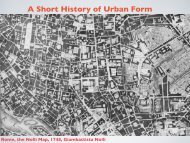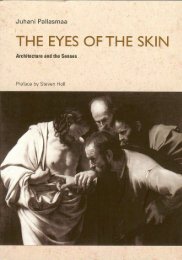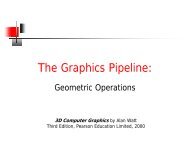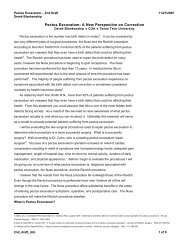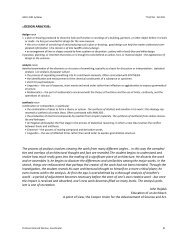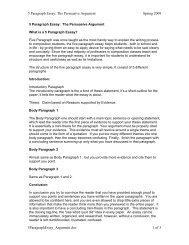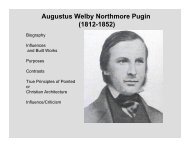Brunelleschi's mirror, Alberti's window, and Galileo's' perspective tube'
Brunelleschi's mirror, Alberti's window, and Galileo's' perspective tube'
Brunelleschi's mirror, Alberti's window, and Galileo's' perspective tube'
- No tags were found...
You also want an ePaper? Increase the reach of your titles
YUMPU automatically turns print PDFs into web optimized ePapers that Google loves.
SAMUEL Y. EDGERTONGradually after a small period of time, these are increased insize <strong>and</strong> brightness. Indeed, after 2 or 3 hours they are joinedwith the rest of the bright part, which has now become larger. Inthe meantime, more <strong>and</strong> more bright points light up, as if theyare sprouting, in the dark part grow, <strong>and</strong> are connected at lengthwith that bright surface as it extends farther in that direction …Now on Earth, before sunrise, aren’t the peaks of the highestmountains illuminated by the Sun’s rays while shadows stillcover the plain? Doesn’t light grow, after a little while, until themiddle <strong>and</strong> larger parts of the same mountains are illuminated,<strong>and</strong> finally, when the Sun has risen, aren’t the illuminations ofplains <strong>and</strong> hills joined together? (Ibid., p. 41-3)Did ever a Baroque painter express the new secular spirit ofl<strong>and</strong>scape art better than this? Was ever an artist’s eye betterprepared to recognize the universal geometrical principles of<strong>perspective</strong> optics <strong>and</strong> chiaroscuro even at work on the moon?Moreover, after thus having marveled at the picturesque lunarterrain, Galileo quickly reverted to his scientific self <strong>and</strong> made twoother amazing <strong>perspective</strong>-related discoveries. The first was whenhe noticed that some of the lunar peaks were tipped with lightwithin the shadow side even as the terminator boundary lay along way off. At the same time, he was able to convert thisphenomenon into a geometric diagram for solving a shadow-castingproblem such as he may have recalled from Guidobaldo del Monte.Figure 19 illustrates another manuscript page which Galileoprepared for Sidereus nuncius. On it he drew a circle representingthe moon, divided by the terminator, which he marked cef. TheSun’s shadow-casting light rays he indicated by the tangent linedcg. With particular ingenuity, considering that his primitivetelescope had no cross-hair sighting device, he was able to estimatethe real distance of the lighted lunar mountain peak to the terminatoras being about one-twentieth (line dc here in the diagram) of theMoon’s whole diameter. This distance, more or less comparable toline DK in Guidobaldo del Monte’s cone/shadow diagram (Figure11), then allowed him to triangulate the mountain’s height. Sincethe moon’s diameter was known to be two-sevenths of the Earth’sown diameter, or about two thous<strong>and</strong> miles, Galileo’s triangle ced,with ce equaling one thous<strong>and</strong> miles, <strong>and</strong> cd one hundred, revealedby Pythagorean calculation that da, the mountain’s height on centerfrom its base, reached more than four miles into the lunar sky! Byapplying a problem well known to students of Renaissance<strong>perspective</strong>, Galileo added yet another fact to his already wondrousrevelations, that the mountains on the moon were more spectacularthan the Alps here on Earth.Galileo’s telescopic observations of the moon, announced inSidereus nuncius, opened the eyes of Renaissance Europeans to a174 História, Ciências, Saúde – Manguinhos, Rio de Janeiro



